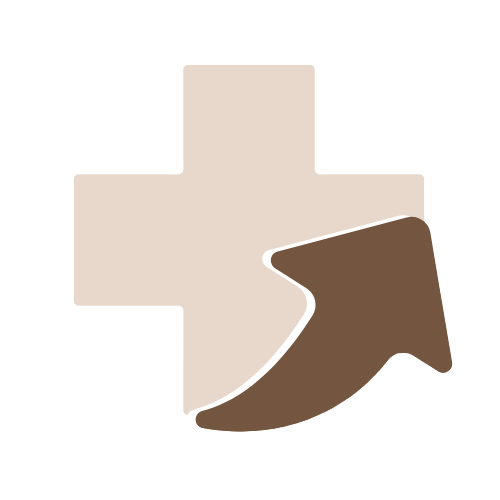Itchy Eyebrows
Overview
Itchy eyebrows are a relatively common but often overlooked dermatological issue. This condition involves an irritating sensation in the skin around the eyebrows, prompting frequent scratching or rubbing. While occasional itchiness can result from minor irritations such as dryness or environmental changes, persistent or severe itching may signal underlying skin conditions, allergies, or infections. In some cases, itchy eyebrows can also be associated with hair loss, redness, or flaking skin. Understanding the cause of itchy eyebrows is crucial for effective treatment and to prevent complications such as skin damage or secondary infections.
Causes
Several factors can contribute to itchy eyebrows, ranging from simple irritations to more complex skin disorders. Common causes include:
- Dry skin: Environmental factors such as cold weather, low humidity, or excessive washing can dry out the skin and cause itchiness around the eyebrows.
- Seborrheic dermatitis: A common skin condition characterized by flaky, scaly patches and redness, especially in oily areas like the eyebrows, scalp, and sides of the nose.
- Contact dermatitis: Allergic reactions to makeup, facial cleansers, or skincare products can cause itching and rash around the eyebrows.
- Psoriasis: An autoimmune skin disease that leads to thick, red patches with silvery scales, which can appear on the eyebrows.
- Eczema (atopic dermatitis): A chronic inflammatory skin condition causing red, itchy, and dry skin around the eyebrows and other facial areas.
- Eyebrow grooming: Waxing, threading, or plucking can irritate the hair follicles or cause ingrown hairs, leading to temporary itching.
- Fungal infections: Ringworm (tinea faciei) or other fungal infections can cause itchy, red, and sometimes circular rashes around the eyebrows.
- Skin mites (Demodex): Tiny mites living in hair follicles may lead to itching and irritation, particularly in individuals with compromised immunity or poor hygiene.
- Stress: Psychological stress can sometimes trigger or worsen skin conditions, leading to increased itching in sensitive areas like the eyebrows.
- Systemic conditions: Conditions like hypothyroidism can cause generalized dry skin and localized itching, including in the eyebrow area.
Symptoms
The main symptom is an itchy sensation in and around the eyebrows, which may vary in intensity. Depending on the underlying cause, other associated symptoms may include:
- Redness or inflammation: Skin around the eyebrows may appear red and swollen.
- Dryness or flaking: Especially common with seborrheic dermatitis and eczema, leading to visible white or yellowish flakes.
- Rash or bumps: Allergic reactions or infections may cause bumps, blisters, or a rash near the eyebrows.
- Burning or stinging sensation: May accompany allergic reactions or dermatitis.
- Thickened or scaly skin: Seen in psoriasis and chronic dermatitis cases.
- Hair thinning or loss: Some conditions like fungal infections or chronic dermatitis can lead to eyebrow hair loss.
- Oozing or crusting: In cases of infection or severe dermatitis, fluid discharge or crusting may be present.
Diagnosis
Diagnosing the cause of itchy eyebrows involves a thorough clinical examination by a dermatologist or healthcare professional. The diagnostic process typically includes:
- Medical history: Detailed questioning about the onset, duration, associated symptoms, skincare routine, and any recent cosmetic procedures or product changes.
- Physical examination: Visual inspection of the eyebrow area for redness, scaling, lesions, or signs of infection.
- Skin scrapings: In suspected fungal infections or mite infestations, skin samples may be collected for microscopic examination.
- Patch testing: Performed if contact dermatitis is suspected, to identify specific allergens causing the reaction.
- Blood tests: May be ordered to evaluate for systemic conditions like thyroid disorders or nutritional deficiencies in persistent cases.
Treatment
Treatment for itchy eyebrows focuses on addressing the underlying cause and relieving the associated symptoms. Common treatment options include:
- Moisturizers: Regular use of gentle, fragrance-free moisturizers to combat dry skin.
- Topical corticosteroids: Low-potency steroid creams may be prescribed to reduce inflammation and itching caused by dermatitis or eczema.
- Antifungal creams: Used for treating fungal infections like tinea faciei affecting the eyebrow area.
- Medicated shampoos: Selenium sulfide, ketoconazole, or zinc pyrithione shampoos may be recommended for seborrheic dermatitis, even if the main symptoms are on the eyebrows.
- Antihistamines: Oral antihistamines may help alleviate itching caused by allergic reactions.
- Proper hygiene: Gentle cleansing of the eyebrow area and avoidance of harsh soaps or irritants.
- Allergen avoidance: Identifying and discontinuing use of any products causing allergic contact dermatitis.
- Antiparasitic treatment: For Demodex mite infestations, prescription treatments like ivermectin or tea tree oil products may be recommended.
- Lifestyle modifications: Managing stress, maintaining good nutrition, and avoiding excessive grooming practices can reduce flare-ups.
Prognosis
The prognosis for itchy eyebrows is generally excellent, especially when the cause is identified and treated appropriately. Most cases of itchiness related to dryness, irritation, or mild dermatitis resolve quickly with topical treatments and improved skincare practices. Chronic conditions like seborrheic dermatitis or eczema may require long-term management but can be well-controlled with proper care. Fungal infections and allergic reactions typically clear up with targeted therapy. Persistent or worsening symptoms should be evaluated to rule out more serious skin conditions or systemic illnesses. With early diagnosis and consistent treatment, most individuals experience significant relief and a return to normal skin health.
